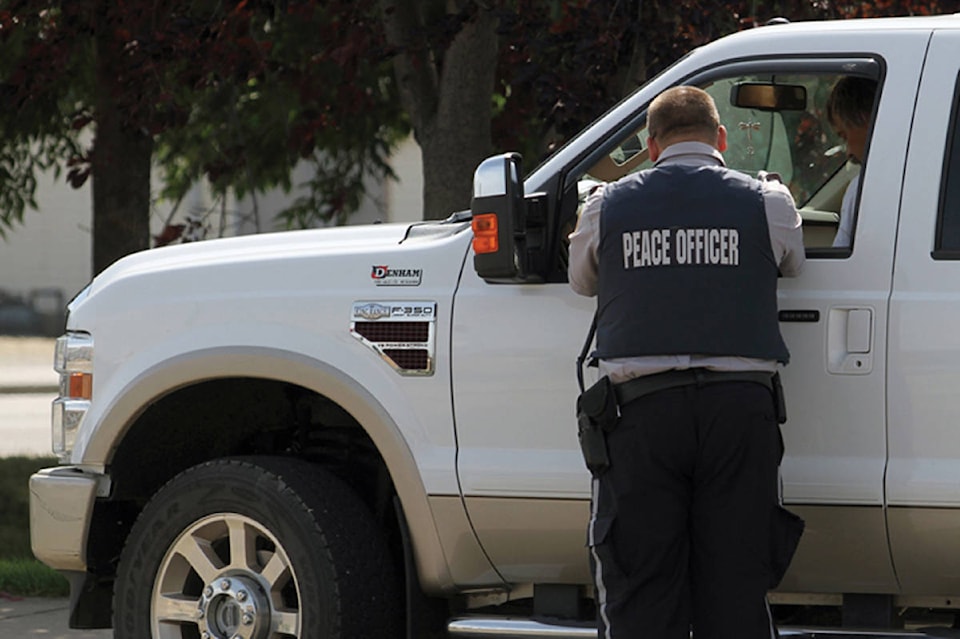Calgary could follow Red Deer’s lead in using peace officers to catch speeders.
A motion calling for a study on the feasibility of using city bylaw and transit officers for traffic enforcement was passed earlier this week in Calgary.
One of the Calgary councillors behind the initiative said it would free up police officers to tackle more serious crimes and save the city money. Recent budget cuts included a $7-million reduction for policing.
Calgary staff plan to review how other communities — Red Deer, no doubt, among them — are using bylaw officers and other non-police enforcement staff.
Red Deer director of protective services Paul Goranson said years ago, the city opted to combine almost all of the non-RCMP enforcement officers, such as bylaw, transit and parks officers, into one department.
“There used to be bylaw officers solely focused on transit and officers solely focused on parks,” he said.
“They’re cross-functional rather than being specific to any one area now.”
Unlike in some communities, Red Deer’s 17 unarmed peace officers have the authority to enforce city bylaws and provincial Traffic Safety Act offences, including speeding.
They are not authorized to investigate Criminal Code offences. For instance, if a peace officer pulls over a speeder and suspects impaired driving, RCMP must be called in.
Goranson said the city’s model has worked well. The extra traffic enforcement helps the RCMP, while saving the city money, because fewer RCMP officers are required.
“As far as economics, it is more economical to use peace officers when you can,” said Goranson.
It costs the city about $160,000 per RCMP officer when all costs, such as vehicles, are included.
Given their different powers, peace officers are not substitutes for Mounties, but they can take some of the workload off traffic officers, said Goranson.
There were challenges in consolidating all of the city enforcement into a single department, with the exception of one position that remained under the inspections and licensing department.
“There are challenges when you have officers who got into the job focused on another area,” said Goranson.
“There’s some retraining and education that has to happen, because you can get involved in all kinds of the different aspects of being a peace officer.
“But it’s a more effective model because of more flexibility in resources and what they can and can’t do. I think it does make sense from that perspective.”
pcowley@reddeeradvocate.com
Like us on Facebook and follow us on Twitter
